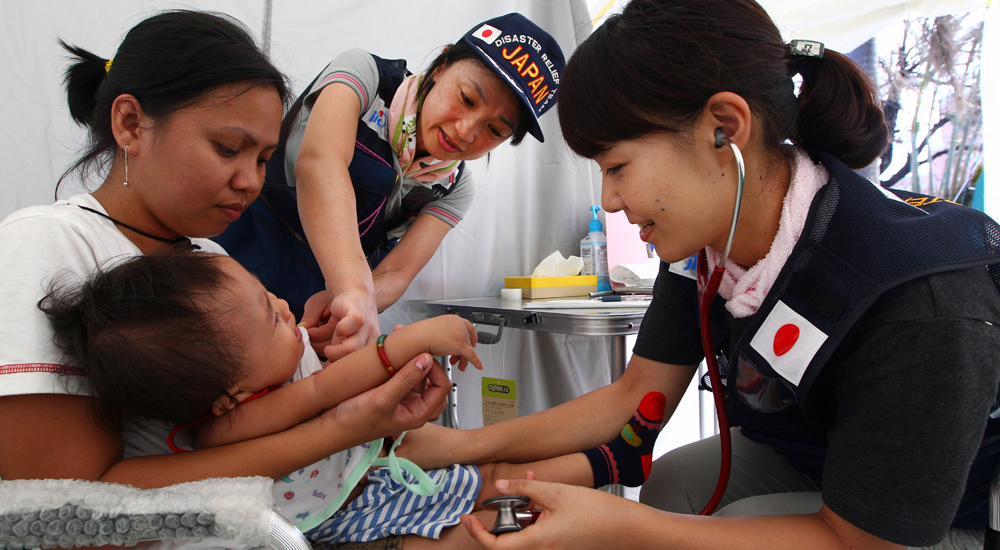Japanese forces back in Leyte Gulf

Japanese doctors examine a baby in a field hospital set up for people who are affected by Typhoon Haiyan in Tacloban, Philippines, Saturday, Nov. 16, 2013. Japan on Monday, Nov. 18, dispatched two warships, carrying some 650 troops, to the typhoon-ravaged Philippines in the first major contingent of the military’s largest overseas aid deployment. AP PHOTO/DITA ALANGKARA
TOKYO—Nearly seven decades after the Battle of Leyte Gulf, considered the biggest naval battle, Japanese forces are being deployed to Leyte.
Japan on Monday dispatched two warships, carrying some 650 troops, to the typhoon-ravaged Philippines in the first major contingent of the military’s largest overseas aid deployment.
The two vessels, also carrying six helicopters, left the western port of Kure and are scheduled to arrive in the Philippines on Friday, said a defense ministry spokesperson.
He added that Japan’s Self-Defense Forces (SDF) was sending a total of 10 planes on Monday to the disaster-struck nation—seven C-130 transport planes, two KC-767 tanker planes and one U-4 multipurpose support aircraft.
The troops’ duties will include providing medical support and transporting relief goods.
An advance team of about 50 SDF personnel was sent last week while the total troop deployment was expected to rise to almost 1,200 in all.
But the timeline for sending the remainder of the troops was not immediately clear.
It is the first time Japanese troops have been active in Leyte—an area hit hard by Supertyphoon “Yolanda”—since the island turned into one of the biggest battlegrounds of World War II when US forces counterinvaded in 1944.
The Battle of Leyte Gulf involved more than 200 ships and some 200,000 sailors during separate engagements, according to various historical accounts.
The 1,180-strong contingent will be the largest single relief operation team ever sent abroad by Japan’s defense forces.
Previous overseas missions by the SDF, which adheres to the country’s postwar pacifist Constitution, have usually numbered in the hundreds.
The previous record was 925 personnel sent in 2005 to Sumatra after the Indonesian island was ravaged by a massive earthquake-triggered tsunami.
Other deployments have included UN peacekeeping missions in Cambodia and East Timor as well as logistical activities in Iraq and naval refueling operations in the Indian Ocean to back the US military in Afghanistan.